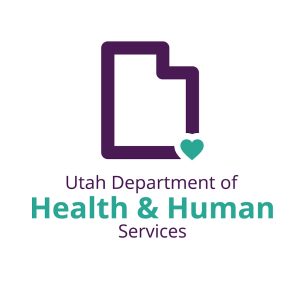Did you know that “82% of gun deaths in Utah are suicides” (Everytown for Gun Safety, 2023)? “People who die by suicide are more likely to have seen a primary care provider in the previous month before their death than any other health care provider” (Suicide Prevention Resource Center 2020).
Suicidal crises can occur suddenly and unexpectedly, even among people without mental illness. People admitted to a hospital after an attempt were asked how much time passed between thinking about and making a suicide attempt; 48% said 10 minutes or less (Harvard School of Public Health, 2024).

“Reducing access to lethal means, such as firearms and medication, is a critical component of suicide prevention” (Zero Suicide EDC, 2024). Most people in a crisis are deeply ambivalent, meaning they want to live and are uncertain about suicide. Lives can be saved if we can put time and distance between a suicidal person and means of suicide, like a firearm. There are two key components to consider when providing care to a patient who is at risk for suicide:
- Assess whether an individual has access to a firearm or other lethal means for suicide.
- Work with individuals and their family and support system to limit access to lethal means until the risk resolves.
What if the Person Is Reluctant To Reduce Access to Firearms?
It is important to listen to the concerns of the patient and try to understand their hesitation. Many people see firearms as a useful tool for protection, a source of recreation, or an important part of their rights and identity. With this in mind, work with the patient and their family and help them weigh their options and address specific concerns. It is important to remember that language matters. The focus should stay on the safety of the patient and the effort to create a safe environment while they are in crisis. Sample questions could be:
- “Many families have firearms in the home. Is this the case for you? If so, how do you store them?”
- “Have you thought about how to keep your kids safe around your guns?” or “What do you think about storing your guns off-site until the situation improves?”
- “One of the best ways to keep loved ones safe during a mental health crisis is securing firearms in the home. Are you able to do that temporarily?”
- “Families can also keep loved ones safe during a mental health crisis by locking up or reducing the amount of medications (prescription or over‑the-counter) in the home. Would you like some more information on how to do that?”
Empower and encourage the patients to decide what is best to stay safe.
Some options to make the environment safe could be:
- Store ammunition separately or remove it from the home.
- Store firearms away from the home temporarily — consider storing firearms with family or friends, law enforcement, a gun range, or firearm shop.
- Change the combinations on firearm safes.
- Disassemble the firearm and store parts separately.
- Give someone else the key to your firearm safe.
In instances where other means are considered:
- Store medications safely — outside the home or locked up.
- Prescribe medications in smaller amounts to reduce availability.
- Remove other identified means from the home.
90% of individuals who attempt suicide do not go on to die by suicide (Harvard School of Public Health, 2024). We can decrease the risk of suicide by preventing access to lethal means and providing interventions to patients who have thoughts of suicide.
Learn More
The Utah Office of Substance Use and Mental Health offers virtual three-hour means safety counseling courses (CEUs included). For more information, email aamitchell@utah.gov.
You can also find several other resources and materials by clicking the links below.
The Live On Utah Playbooks are the first of its kind — a quick‑paced, 10 lesson course with simple, specific tips on how to talk about mental health and prevent suicide.
https://liveonutah.org/playbooks/
Intermountain Healthcare Counseling on Access to Lethal Means (CEUs included)
https://intermountainhealthcare.org/ihcu/public/bh/CounselingOnAccessToLethalMeansCALM-ToPreventSuicide/Primary/story.html?origref
Zero Suicide Counseling on Access to Lethal Means
https://zerosuicidetraining.edc.org/enrol/index.php?id=20
Firearm Safety and Patient Health
https://www.facs.org/media/1mtadqiv/22_tr_pdf_firearminjuryprevention_interactive_6a_release.pdf
Flyer: When Firearm Safety and Safe Storage Is Your Goal
https://utahsuicidepre.wpengine.com/wp-content/uploads/2023/12/CH_2552362-Firearm-safe-storage-document-for-schools_HF042523.pdf
Flyer: Four Simple Steps to a Medication-Safe Home
https://jedfoundation.org/wp-content/uploads/2023/04/Medication-Safe-Home-2.16.23-FINAL.pdf
Means Matter — Harvard School of Public Health
https://www.hsph.harvard.edu/means-matter/means-matter/duration/








